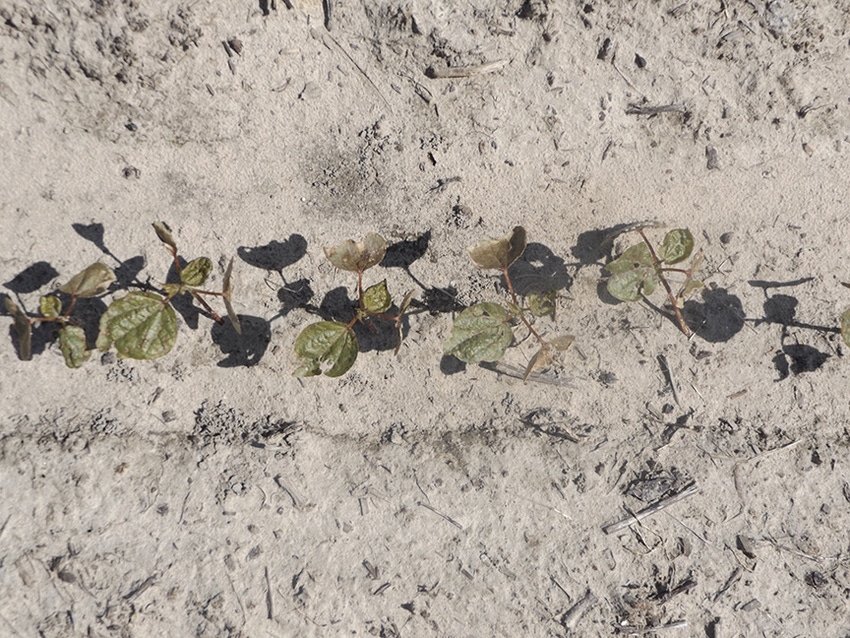May 31, 2018

I have received several calls concerning mixing herbicides and acephate (Orthene). With challenging weather comes the urgency to save time and trips across the field and at this time of year that usually means tank-mixing glufosinate (Liberty) + acephate.
However, due to abundant rainfall over the past couple of weeks, folks are worried residual herbicides applied behind or ahead of the planter have played out. So I have also been asked about cotton response to the three way mixture of glufosinate + s-metolachor (Dual Magnum)/Warrant + acephate.
First off, Dr. Dominic Reisig just put out an excellent article on making the decision to spray for thrips.
Back to herbicides. These are the typical questions I get.
Grower/Consultant/Extension Agent: “I have weeds coming and I need to spray for thrips. Can I mix glufosinate + s-metolachlor/Warrant + acephate?” Or, “How hot is glufosinate + s-metolachlor/Warrant + acephate; will it cause a yield loss?”
My answers is not as straight forward as you may think. Yes, you can mix glufosinate + s-metolachlor/Warrant + acephate. Will this mixture be hot? Absolutely. However, in our research, we have not seen these mixtures cause yield loss.
The last study I conducted addressing this was actually in Virginia during 2016. We looked at the response of an XtendFlex and Stoneville cotton variety to glufosinate, glufosinate + acephate, glufosinate + Warrant, and glufosinate + acephate + Warrant applied to 1- to 2-leaf cotton and repeated at 4-leaf cotton. Tank-mixes with glufosinate also included AMS.
Cotton injury was greatest 7 days after application. We observed minor necrosis from glufosinate. Adding acephate to glufosinate slightly increased cotton response.
The addition of Warrant to glufosinate elicited a little more response. And for both cultivars, the three-way mixture of glufosinate + acephate + Warrant was most injurious, injuring cotton approximately 20 percent.
Twenty percent injury is probably more than most growers are comfortable with, but cotton injury was completely gone 21 days after the second application. It is also important to note even when these treatments were applied TWICE, we still did not see a yield loss.
So my recommendation is this. For tank mixes of glufosinate + acephate or glufosinate + s-metolachlor/Warrant, pull the trigger. If you can live with some temporary cosmetic injury (and have the need for glufosinate + s-metolachlor/Warrant + acephate), it makes sense for you save a trip across the field with the three-way mix.
Cotton will recover and the temporary necrosis will not translate into a yield loss. If 20 percent injury will keep you up at night, splitting your herbicides and acephate sprays will be in the best interest of your peace of mind.
(EDITOR’S NOTE: Charlie Cahoon, Jr., is a North Carolina Extension Weed Specialist.)
About the Author(s)
You May Also Like




